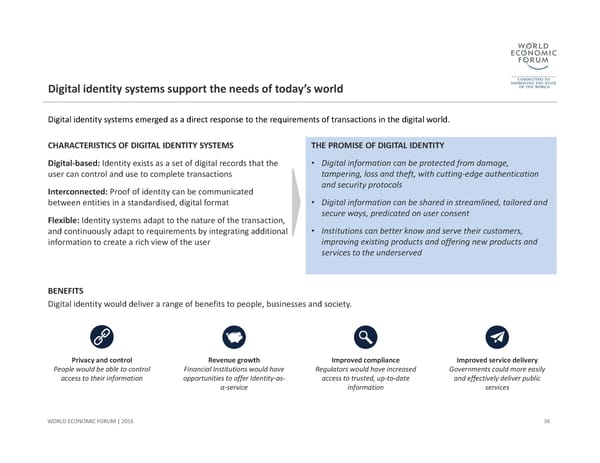Digital identity systems support the needs of today’s worldCHARACTERISTICS OF DIGITAL IDENTITY SYSTEMS Digital‐based: Identity exists as a set of digital records that the user can control and use to complete transactions Interconnected: Proof of identity can be communicated between entities in a standardised, digital format Flexible: Identity systems adapt to the nature of the transaction, and continuously adapt to requirements by integrating additional information to create a rich view of the user THE PROMISE OF DIGITAL IDENTITY •Digital information can be protected from damage, tampering, loss and theft, with cutting‐edge authentication and security protocols •Digital information can be shared in streamlined, tailored and secure ways, predicated on user consent •Institutions can better know and serve their customers, improving existing products and offering new products and services to the underserved 36 WORLD ECONOMIC FORUM | 2016 BENEFITS Digital identity would deliver a range of benefits to people, businesses and society. Digital identity systems emerged as a direct response to the requirements of transactions in the digital world. Revenue growth Financial Institutions would have opportunities to offer Identity‐as‐ a‐service Privacy and control People would be able to control access to their information Improved compliance Regulators would have increased access to trusted, up‐to‐date informationImproved service delivery Governments could more easily and effectively deliver public services
 A Blueprint for Digital Identity Page 36 Page 38
A Blueprint for Digital Identity Page 36 Page 38